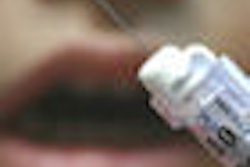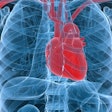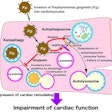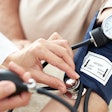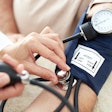
While modern anesthesia techniques have reduced the risks associated with sedation, dental practitioners need to exercise added caution when treating patients with pre-existing medical conditions, according to a continuing education article in Anesthesia Progress (Fall 2011, Vol. 58:3, pp. 126-138).
The authors -- Daniel Haas, DDS, PhD, associate dean of clinical sciences and a professor and head of dental anesthesia at the University of Toronto, and Daniel Becker, DDS, associate director of education, general dental practice residency, at Miami Valley Hospital -- focused on how to evaluate patients with cardiovascular issues, but their advice could help avoid serious complications with all medically compromised patients.
— Daniel Haas, DDS, PhD
One of their first observations is counter to what one would assume about anesthetizing an at-risk patient: Cardiovascular complications may be even more likely during dental procedures using local anesthesia alone than when sedation is provided, they wrote.
"We wanted to reinforce the knowledge that dentists should have when putting their patients under moderate or deep sedation," Dr. Haas said. "Part of the goal with these articles is to make sure everyone was on top of their game as far as being able to prevent or recognize an adverse event."
It is an important topic that requires periodic updates, Dr. Becker added.
First things first
"It all starts with patient history," Dr. Haas said, "followed up by a physical examination to the extent of recording blood pressure, heart rate, and evaluating the patient at that level, then determining if more tests are required or not."
The writers give particular focus to hypotension and hypertension in their piece. A patient's episodes of hypotension "may become prolonged in the presence of central nervous system depressants," they warned. Be wary of a significant decline in blood pressure from the patient's baseline reading. And an easy way to perform an assessment of the perfusion of peripheral tissues is to squeeze the patient's nail beds and note the color changes and rate of capillary refill.
Do not hesitate to send a patient back to his or her physician, even though it may prolong the time frame before the patient is treated.
"If someone has hypertension or high blood pressure, the question is, 'Is it well-controlled?' " Dr. Haas explained. "Referring a patient to a physician to get more evaluation or to get their hypertension brought under better control before he has an elective procedure may be necessary."
In some cases, a patient may need to be referred back to their physician if a hypertensive episode occurs during treatment. "Simply stated," the authors wrote, "patients without acute end-organ symptoms should not receive antihypertensive agents in the office." Instead, they can safely be referred to their physician for a follow-up within several days.
The authors also describe the best position for a patient to be in during issues that arise under sedation. While the Trendelenburg position had been recommended in the past, it actually offers few advantages, they contend.
"The more appropriate position when managing most medical complications in sedated patients or those who are unresponsive is to have the patient supine with the legs elevated slightly," they said. This should improve venous return.
Active monitoring crucial
Knowing when to take action -- such as a change in position -- comes down to vigilance while the patient is under anesthesia, a step equal in importance to careful patient screening.
"It's crucial to have appropriate monitoring of blood pressure, heart rate, and oxygen saturation of the blood to make sure the patient is in a safe zone and hasn't changed markedly from their baseline," Dr. Haas explained. "Through active monitoring, the dentist can tell if there are changes that need to be acted upon or not."
In cases of cardiac arrest, having a defibrillator on hand may save a patient's life. While defibrillators are required at practices that perform deep sedation, the laws vary for light sedation. Nearly two dozen states require automatic automated external defibrillators (AED), according to the Academy of General Dentistry. There are certainly benefits to having one, the authors noted.
"The greatest success is when cardiopulmonary resuscitation is initiated immediately and is followed by defibrillation within 5-8 minutes of cardiac arrest," they wrote.
AEDs are becoming more common in dental offices, even at those that don't carry out sedation, according to Dr. Haas.
"In particular, they're trending toward the AEDs and gradually becoming more common for practices with light levels of sedation," he said.
For them to be used effectively, dentists have to be "on top of their game," he added.
"There haven't been many adverse events in recent years, and it's important to keep it that way by not getting complacent and by making sure that the dentist is very well aware of what could potentially happen, how to assess it, how to monitor it, and how to prevent it," Dr. Haas said.






